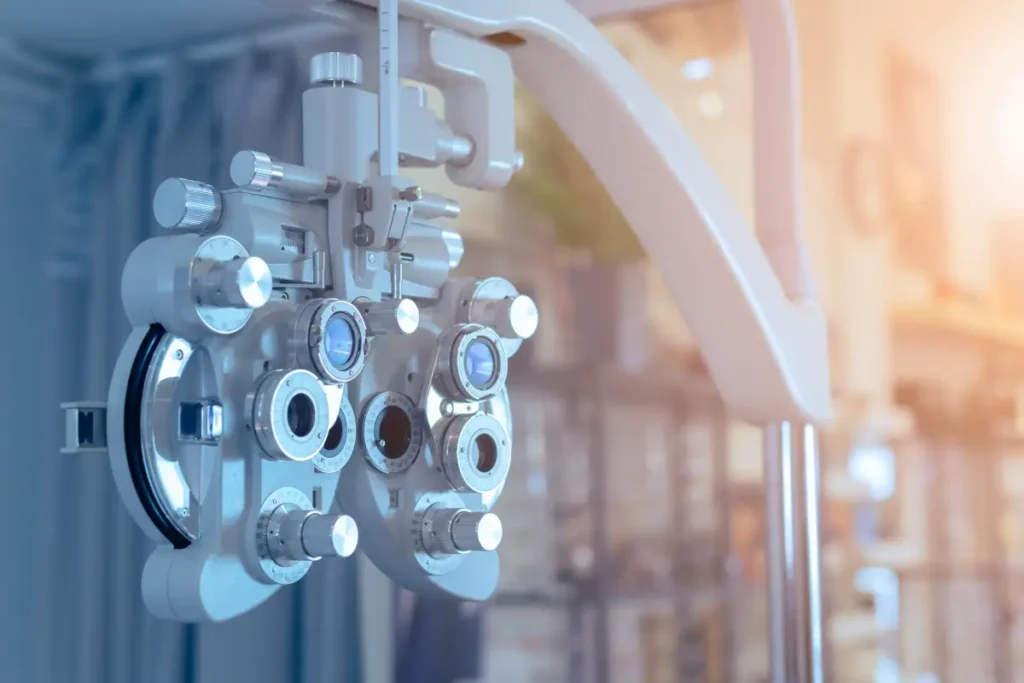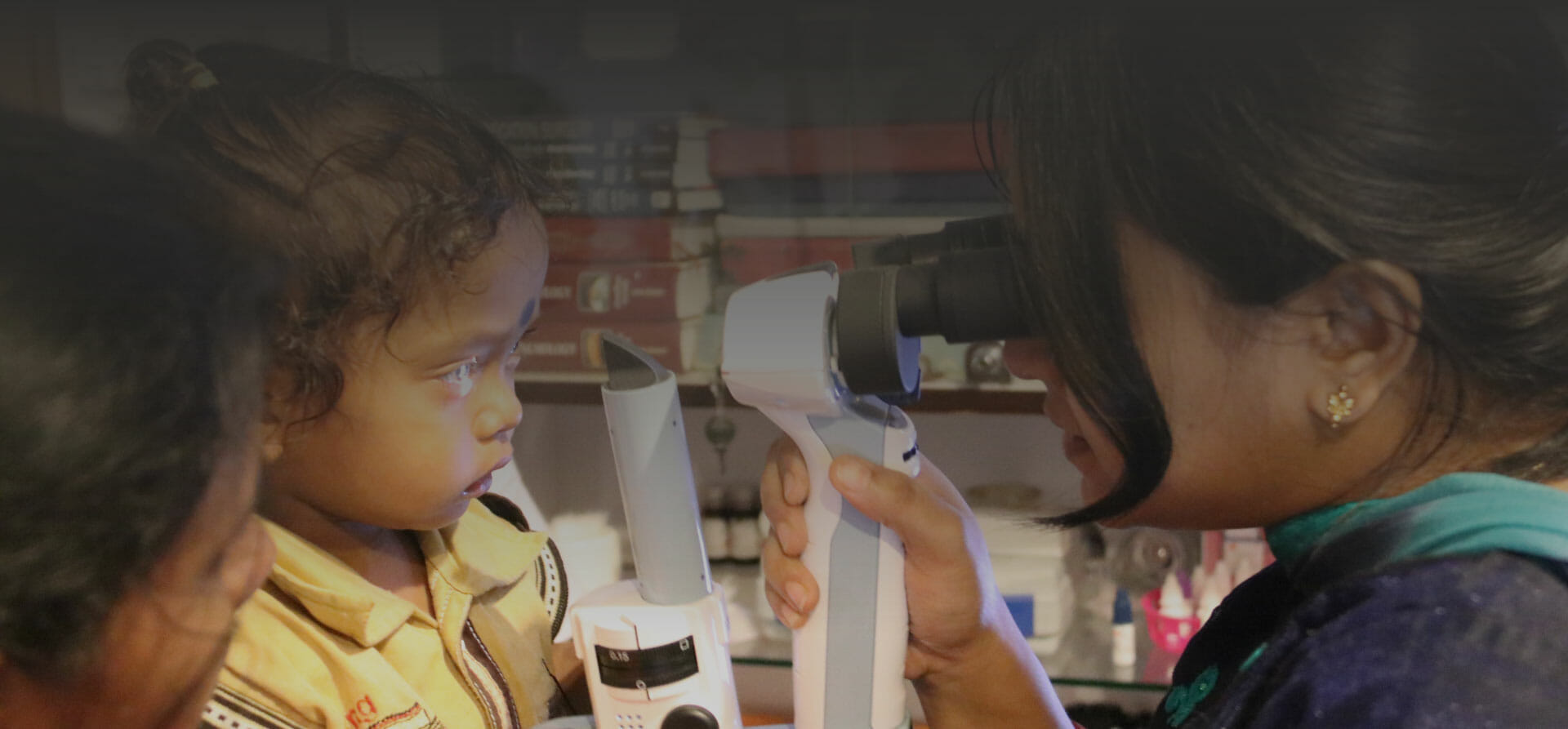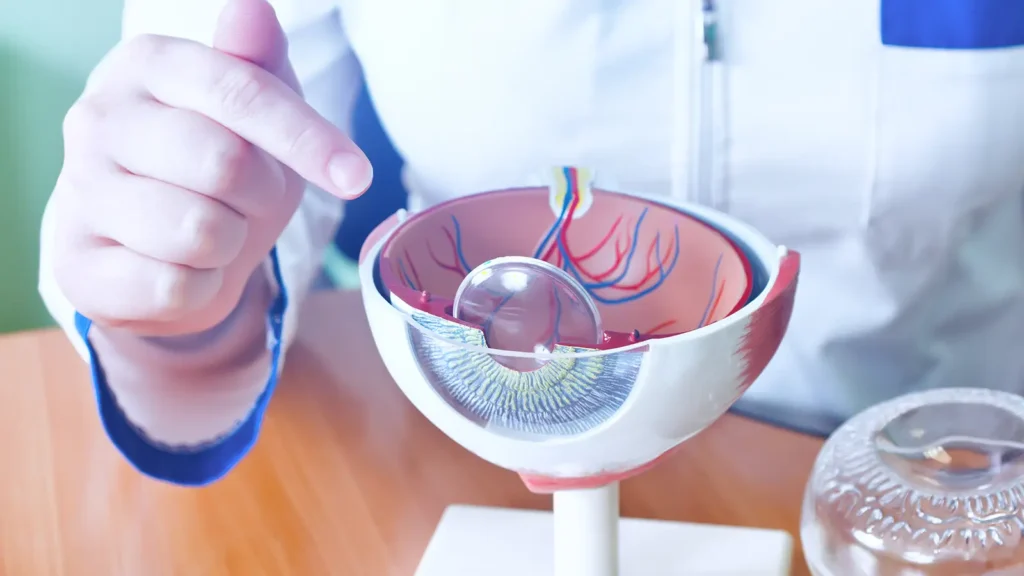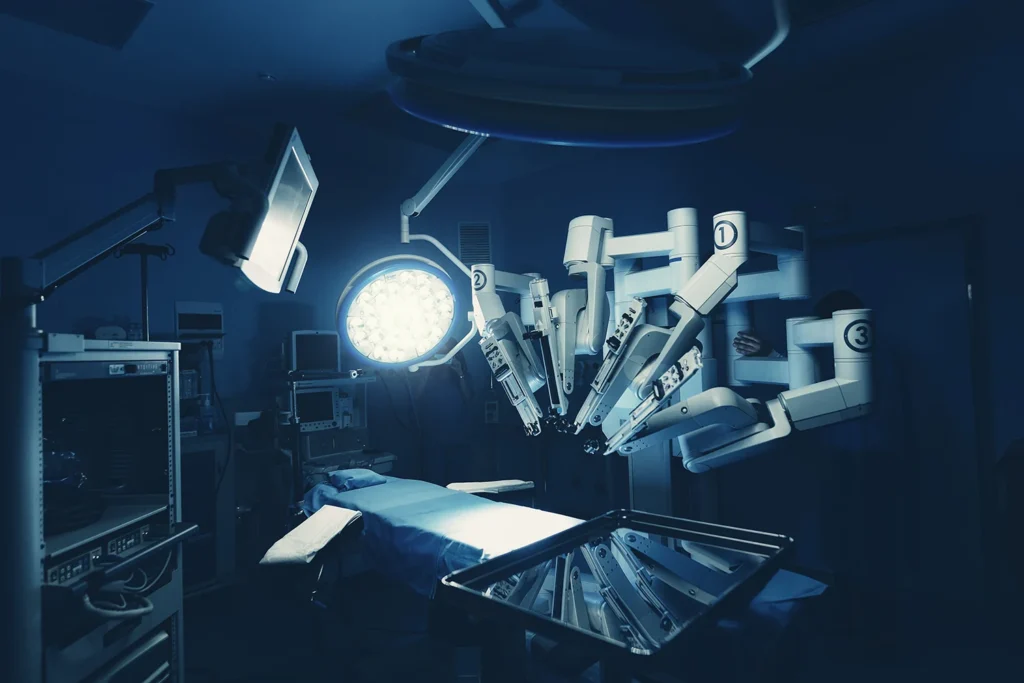Imagine living in a world where your vision gradually fades, turning every clear image into a blur. This is the reality for millions as cataracts continue to be a leading cause of blindness globally. Remember many who need treatment, cannot afford it, leaving them in a growing darkness.
But there is a cutting-edge solution that could not only treat cataracts more efficiently but also extend its benefits to more people — robotic cataract surgery—a groundbreaking approach that enhances precision and safety, making surgery quicker and recovery smoother.
So, let’s uncover how the latest breakthroughs in robotic technology are opening new possibilities for treating cataracts and restoring vision.
Contents
- 1 What is Robotic Cataract Surgery?
- 2 How Robotic Cataract Surgery Works
- 3 Your Help Can Make a Difference!
- 4 Benefits of Robotic Cataract Surgery
- 5 What is the Main Disadvantage of Using Robotics in Surgery?
- 6 Cost of Robotic Cataract Surgery
- 7 Comparing Robotic and Traditional Cataract Surgery
- 8 Can Robotic Surgery Cause Nerve Damage?
- 9 Which Hospital Has Robotic Surgery in India?
- 10 Affordable Robotic Cataract Surgery at EyeMantra Foundation
What is Robotic Cataract Surgery?
Robotic cataract surgery is a modern approach that uses advanced technology to help doctors perform eye surgery with greater precision. Unlike traditional surgery, which depends mostly on the surgeon’s hand movements, robotic surgery involves a special machine controlled by the surgeon.
This machine includes a robotic arm that the surgeon operates using a computer. The arm holds tiny tools and moves with high accuracy, guided by detailed images of the eye that are shown on a screen. This allows the surgeon to make very precise and careful movements, reducing the chance of any damage and improving the safety and success of the surgery.
Using robots in cataract surgery helps make sure that each step of the procedure is performed exactly right, offering a consistent and efficient way to treat cataracts. This new technology represents a big step forward in eye care, making surgery safer and quicker for patients.
How Robotic Cataract Surgery Works

Robotic cataract surgery is an advanced technique that uses robotic systems to enhance the precision and control of surgical procedures. Here’s a step-by-step look at how this innovative technology works during a cataract surgery:
- Preparation and Setup: Before the surgery begins, the patient’s eye is carefully measured and mapped.
- Incision: The surgeon uses the robotic system to make a small, precise incision in the eye. This setup allows for extremely accurate cuts that are consistent every time, reducing the risk of infection and speeding up the healing process.
- Cataract Removal: Once the incision is made, the surgeon uses the robotic tools to break up and remove the cloudy lens, or cataract, from the eye.
- Lens Implantation: After removing the cataract, a new artificial lens is inserted into the eye. The robotic system helps place the lens exactly where it needs to be for optimal vision. The surgeon oversees this process, ensuring that the lens is perfectly aligned.
- Closure and Completion: Finally, the incision made at the beginning of the surgery is sealed, often without the need for stitches, thanks to the precision of the robotic incision. This minimizes scarring and further reduces recovery time.
The use of robotic technology in cataract surgery not only increases the precision of each step but also gives the surgeon greater control throughout the procedure. This leads to better outcomes, a quicker recovery for the patient, and a lower chance of complications.

Your Help Can Make a Difference!
Cataract Is The Biggest Reason For Blindness!
With Every Donation, You’re Gifting a Cataract Surgery To Someone in Need!
Benefits of Robotic Cataract Surgery
- Increased accuracy and precision in surgical procedures.
- Reduced risk of complications during and after surgery.
- Potentially quicker recovery times for patients.
- Enhanced consistency in surgical outcomes across different cases.
- Minimal scarring due to precise incisions.
- Lower likelihood of needing additional corrective procedures.
- Improved safety with less physical manipulation of the eye.
- Greater patient satisfaction due to improved visual outcomes.
What is the Main Disadvantage of Using Robotics in Surgery?
The main disadvantage of using robotics in surgery is the high cost. Robotic systems involve sophisticated technology and require significant investment in both the machinery and the training of surgeons. This can lead to higher expenses for healthcare facilities, which may translate into higher costs for patients.
Other Disadvantages of Using Robotics in Surgery
- High Costs: Initial investment, maintenance, and operational costs are significantly higher than traditional surgical methods.
- Limited Availability: Robotic surgery systems may not be available in all hospitals, especially in less developed regions.
- Training Requirements: Surgeons need specialized training to operate robotic systems, which can be time-consuming and expensive.
- Technical Issues: Like any technology, robotic systems can face technical failures or malfunctions, which can disrupt surgeries.
- Longer Setup Time: Preparing robotic equipment for surgery can take longer than setting up for traditional procedures.
- Dependency on Equipment: Reliance on specific technology can be limiting if the equipment becomes outdated or if better technology emerges.
- Complexity: The complexity of robotic systems can make troubleshooting and repairs more challenging and costly.
Cost of Robotic Cataract Surgery
The cost of robotic cataract surgery can vary widely depending on several factors, including the facility, the technology used, and the region. However, as a starting point, the cost for this advanced and latest surgery typically begins at around 50 thousand rupees. This initial cost reflects the use of sophisticated robotic technology, which requires substantial investment in equipment and training.
Comparing Robotic and Traditional Cataract Surgery
| Aspect | Robotic Cataract Surgery | Traditional Cataract Surgery |
|---|---|---|
| Procedure Time | Often shorter due to higher precision and automation. | Longer, as it relies more on manual skill and technique. |
| Recovery Time | Typically quicker, with less trauma to the eye. | May take longer due to the potential for more manual manipulation during surgery. |
| Success Rates | Generally higher, due to the precision and consistency of the robotic system. | High, but can vary more between surgeons due to the reliance on manual skills. |
| Patient Satisfaction | Often very high due to reduced recovery times and better visual outcomes. | Generally high, though dependent on the surgeon’s skill and experience. |
| Cost | Higher, reflecting the advanced technology used. | Lower, due to less reliance on costly technological equipment. |
| Availability | May be limited to certain advanced medical centers. | Widely available in most hospitals and clinics. |
This comparison shows how robotic cataract surgery offers benefits in terms of efficiency and outcomes but comes at a higher cost and less availability. Traditional cataract surgery, while more dependent on the surgeon’s skill, remains a reliable and widely accessible option.
Can Robotic Surgery Cause Nerve Damage?

Yes, robotic surgery can potentially cause nerve damage, although such instances are rare. This can occur due to extreme body positioning or direct nerve compression by robotic instruments during the procedure. Additionally, nerve injuries may develop related to pressure from positioning on the operating table.
During robotic surgeries, patients may need to be positioned in ways that facilitate the optimal use of the robotic arms and tools. These positions, if maintained for extended periods, can sometimes place undue stress or pressure on certain parts of the body. This can lead to nerve palsies, which are conditions where nerve function is impaired, causing weakness, numbness, or paralysis in the affected area.
So, despite these precautions, the risk of nerve damage, although low, is a consideration that patients should discuss with their surgeons when considering robotic surgery.
Which Hospital Has Robotic Surgery in India?
With many top hospitals adopting this advanced technology to provide cutting-edge medical care, EyeMantra Hospital stands out as a premier facility equipped with state-of-the-art robotic surgery systems.
At EyeMantra Hospital, we are committed to delivering the highest standards of care through the integration of robotic technology in our surgical procedures. Our robotic surgery program is led by a team of expert surgeons, trained in the latest robotic techniques to ensure precision, safety, and the best possible outcomes for our patients. If you are considering robotic surgery, EyeMantra Hospital is a leading choice in India.
Affordable Robotic Cataract Surgery at EyeMantra Foundation
If you’re experiencing cataract related problems, Cataract Surgery at EyeMantra Founation can help: Book your free appointment now at +91 9711116605.
As the rates of cataracts continue to rise, so does the number of people facing the threat of blindness. These individuals urgently need help but simply cannot afford the treatment that could restore their sight.
Your Small Gesture Can Mean a World of Difference!
At EyeMantra Foundation, we believe that no one should be deprived of the right to see because of financial constraints. That’s why we’re reaching out to you—because your small donation can make a huge impact.
“Join Hands with Eye Mantra Foundation”
We invite you to contribute today. Every penny you donate goes directly towards funding surgical procedures, medications, and post-operative care for those who can’t afford it.
Click on the “Donate Now” button to start helping today
